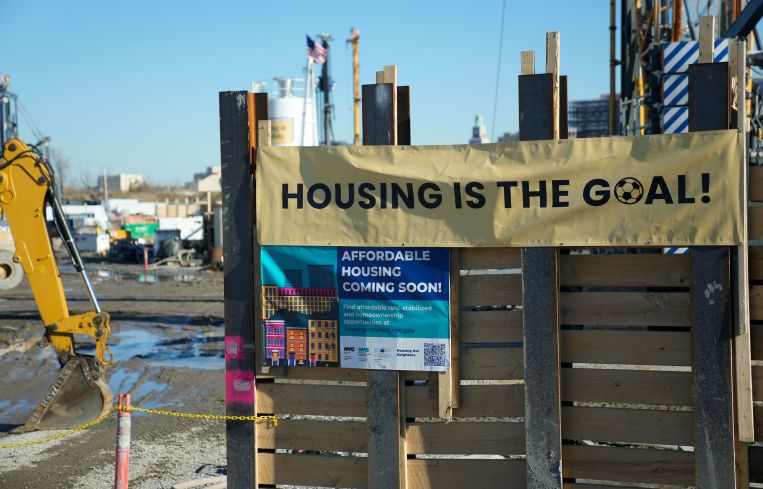NYC Unveils Financing Program for 70% Affordable Developments
By Rebecca Baird-Remba December 26, 2023 3:13 pm
reprints
The New York City Department of Housing Preservation and Development (HPD) unveiled a new mixed-income financing program Tuesday aimed at helping mostly-affordable projects secure city tax exemptions in an effort to jump-start the city’s moribund residential development market.
Developers of projects where at least 70 percent of the units are affordable can submit proposals to the city to qualify for an Article XI tax abatement and city subsidy, according to the HPD term sheets. Projects that don’t rely on federal Low-Income Housing Tax Credits (LIHTC), a common financing mechanism for affordable housing, can apply, and the tax break must be approved by the New York City Council. Housing officials told Commercial Observer that the goal of the program is to finance affordable development in more expensive parts of the city, where a small number of market-rate units could cross subsidize the lower-income affordable ones.
“If we allow a portion of the units to be unrestricted, can we get a mix of affordability without doing 100 percent affordable?” said Kim Darga, the deputy commissioner for housing development at HPD. “We are looking for people to bring projects to us and see what they think actually work.”
Under the current city rules, Article XI — which can exempt some or all of a property’s taxes for up to 40 years — applies only to city-subsidized projects carried out by a Housing Development Fund Company, or HDFC. The initiative, first reported by The New York Times, would make it easier for subsidized rental buildings to access private financing and Article XI abatements, the latter of which often require years of negotiations with city officials.
“New York City is in the midst of a housing and affordability crisis, so we must explore every creative idea to deliver the relief New Yorkers need,” Mayor Eric Adams said in a statement. “As someone who grew up on the edge of homelessness, allowing New Yorkers to feel insecure about their housing situation is simply unacceptable.”
The city has struggled with hitting the federal cap on tax-exempt bonds, which are used to secure LIHTC. The cap, combined with the rising interest rates and the expiration of the 421a tax abatement in mid-2022, has made it difficult for developers and the city to finance new rental construction in the five boroughs.
New development has slowed to a crawl since 421a expired, particularly in more affordable parts of the city, where developers relied on the tax break to underwrite new buildings with lower market-rate rents. The state legislature and Gov. Kathy Hochul have failed to hammer out a replacement for the tax break, and the Real Estate Board of New York and construction unions have fought over wage rules and affordability requirements. Naturally, slow housing production means the mayor may not make his “moonshot goal” of building and preserving 500,000 units over the next 10 years.
The new program, dubbed the Mixed-Income Market Initiative, does not replace 421a, which required that only 30 percent of the apartments in a project be affordable. The program also demands that builders reserve at least a quarter of their units for extremely low-income New Yorkers and set aside 15 percent of the building for people exiting the shelter system.
The income-restricted part of the project can have rents affordable to New Yorkers earning up to 120 percent of the city’s area median income, or $165,230 for a family of three. The affordable units would be rent-stabilized for a minimum of 30 years, or for as long as the Article XI tax abatement is in place, per city term sheets.
Ultimately, only 30 percent of the units in a qualifying building can rent at market rate. Developers can rely on a city subsidy, along with “public and private sources including but not limited to private institutional lenders and private equity,” HPD’s documents note.
Deputy Mayor Maria Torres-Springer said that the new program “will surface new models for combining public resources and private financing to produce new homes for working families, seniors, children, and all New Yorkers who are struggling, with a particular focus on neighborhoods with little affordable housing.”
Rebecca Baird-Remba can be reached at rbairdremba@commercialobserver.com.
Update: This piece has been updated with a quote from an HPD official and corrected to reflect the fact that HDFCs will still need to be involved in Article XI transactions, even under the new financing program.


